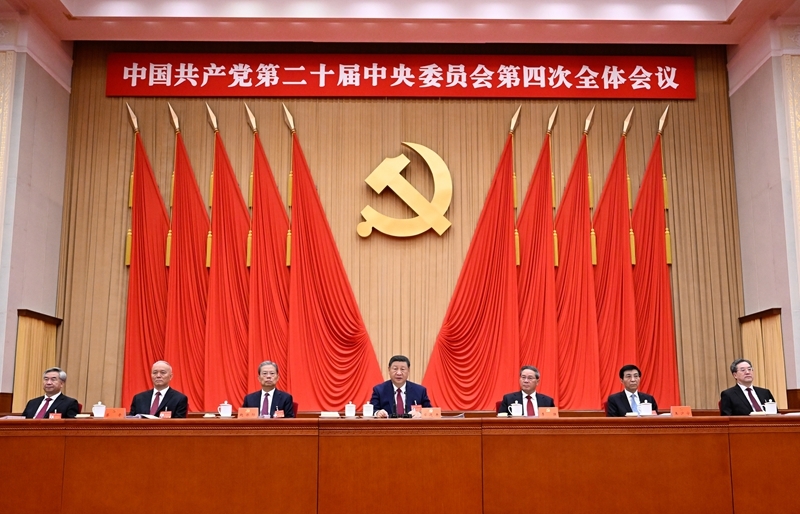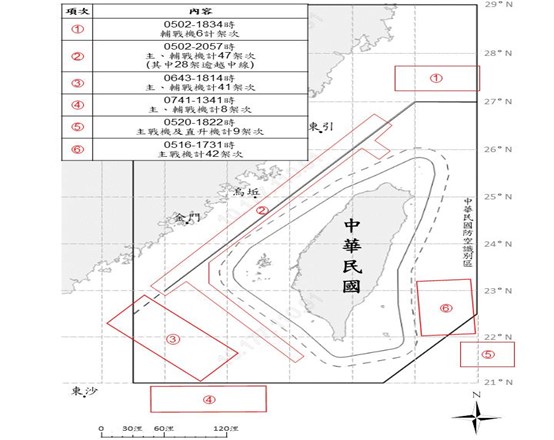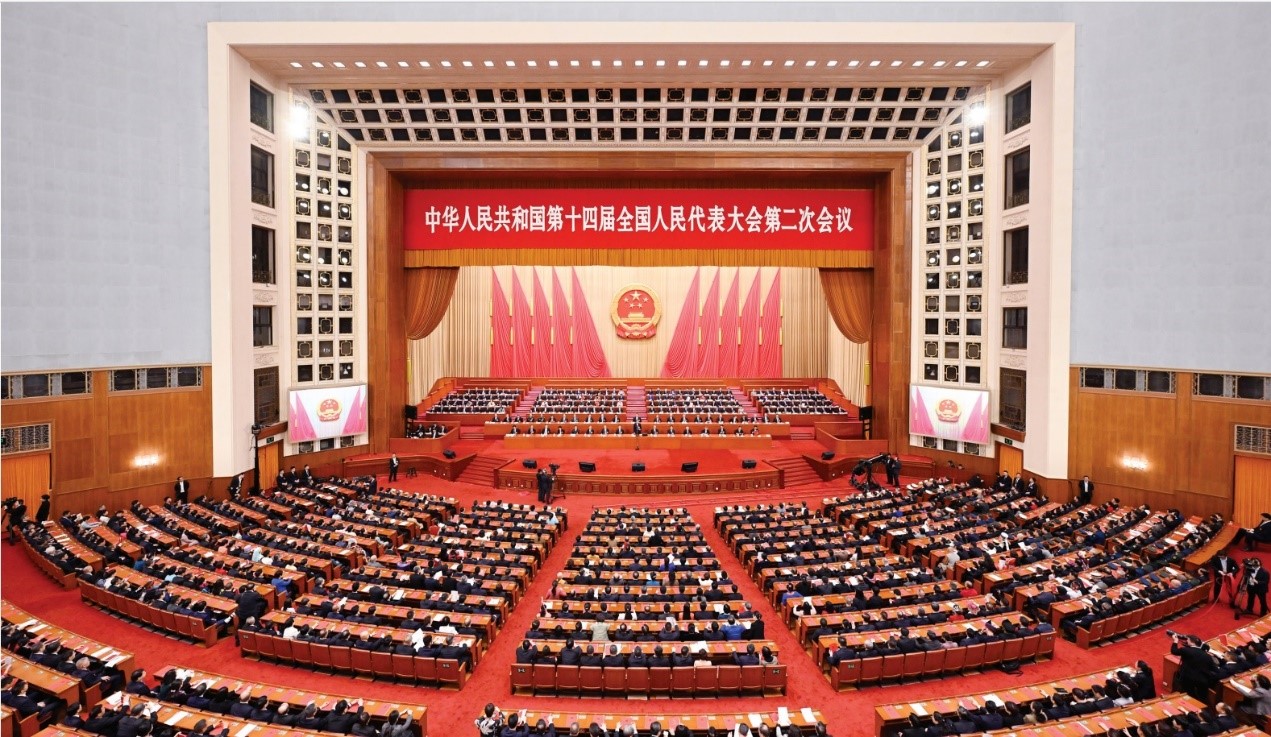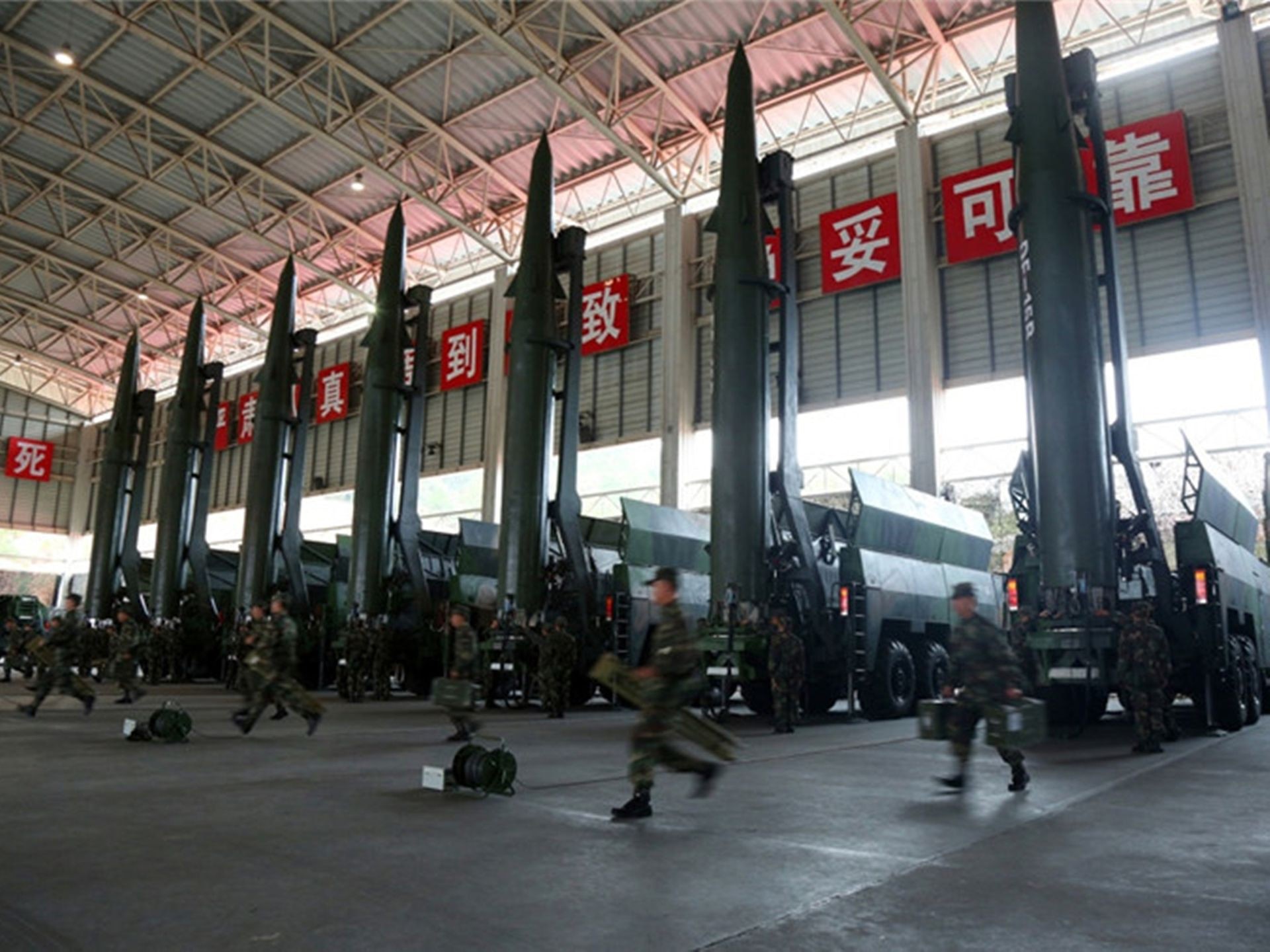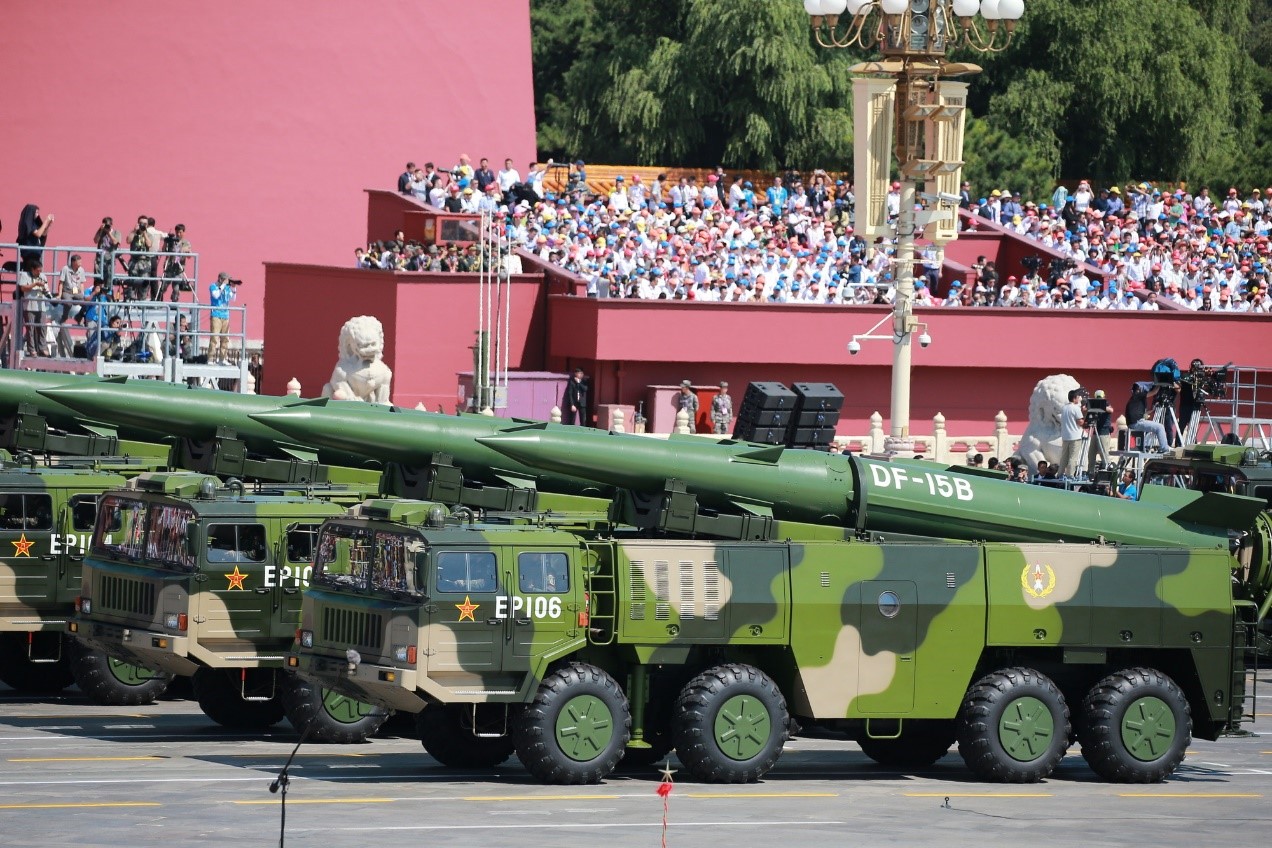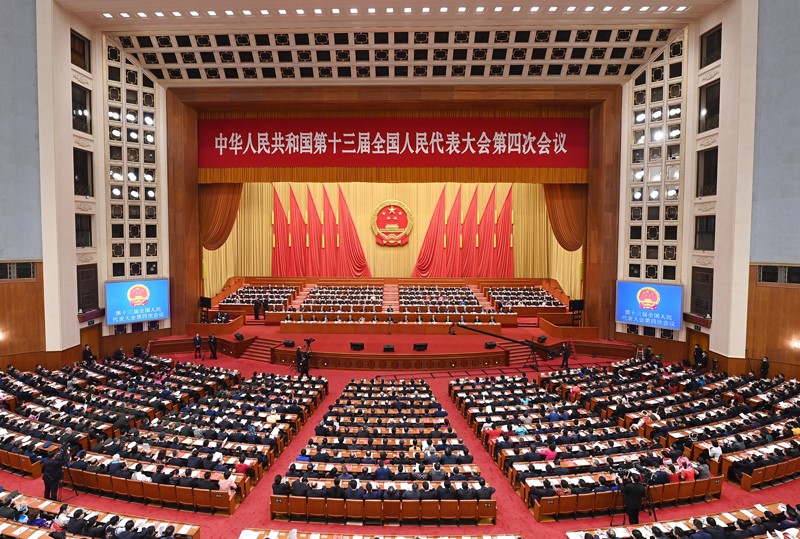The most important task for the CCP’s 4th Plenum was to approve the outline of the new five-year plan. Another issue of concern has been the necessary personnel changes to fill the holes left by Xi Jinping’s high-profile purges of the PLA. In this historical moment, Xi’s CCP has chosen to focus on improving China itself while relying on a model that, in Beijing’s eyes, has brought great success. The next five-year step towards the 2035 socialist modernization goal is made with anxious confidence. Picture source: PRC, October 23, 2025, gov. cn, https://www.gov.cn/yaowen/liebiao/202510/content_7045444.htm.
Prospects & Perspectives No. 58
The CCP’s 4th Plenum:
Is China on the Right Path?
By Sense Hofstede
From October 20-23, the Chinese Communist Party (CCP) held the 4th Plenum of the 20th Central Committee. On October 23, Beijing released the communiqué followed by a press conference the next day. The outcome of the gathering suggests that Beijing will seek to continue strengthening its autonomous national power for the next five years.
The most important task for this plenary meeting of leading party cadres was to approve the outline of the new five-year plan. Another issue of concern has been the necessary personnel changes to fill the holes left by Xi Jinping’s high-profile purges of the People’s Liberation Army (PLA).
In this historical moment, Xi’s CCP has chosen to focus on improving China itself while relying on a model that, in Beijing’s eyes, has brought great success. The next five-year step towards the 2035 socialist modernization goal is made with anxious confidence. The Central Committee sees a period of both strategic opportunity and risks and challenges in an increasingly uncertain world.
To that end, it is worth looking in more detail at the balance struck in industrial policy and the details of the personnel changes. For Taiwan, they do not signify momentous changes to the standing policy of “peaceful development” just yet. China’s confidence in having gotten it right as Beijing strengthens Party control over the PLA might, however, over time, inspire more active moves against Taipei.
The 15th five-year plan
Xi used the previous five-year plans to move away from a model of growth at all costs to a focus on economic strength in the service of national strength. The communiqué’s introduction of the 15th five-year plan outline confirms this goal. Economic development remains a core task (以經濟建設為中心) under the theme of seeking progress within stability (穩中求進).
The 13th five-year plan (2015) saw the introduction of Made in China 2025 and the New Development Concept that paved the way for the New Development Pattern of focusing on “high-quality development” and dual circulation of the 14th five-year plan (2020). The 15th five-year plan continues this project. The first two of seven core tasks for the new plan are “significant achievements in high-quality development” and “substantial improvements in scientific and technological self-reliance and strength.” Supply side reforms ought to speed up a virtuous cycle of innovation and consumption to leap over China’s constraints.
Due to the domestic economic challenges, some were looking for signs of a shift to explicit demand-side measures. And in that regard, the press conference did in fact mention the goal of substantially increasing domestic consumption’s share of China’s GDP. A Xinhua commentary before the Plenum stressed that domestic consumption is “the main engine and anchor” of economic growth. However, boosting consumption directly did not figure as a major top-level item itself in the communiqué. Instead, it was included as part of the aim to improve the domestic market and foster Xi’s New Development Pattern. Boosting consumption is a tactic to address shortfalls in service of an economic strategy that remains reliant on industrial policy.
The copious commentary released around the Plenum makes clear that Beijing retains plenty of confidence in its “unsinkable economic aircraft carrier” under the guidance of Xi Jinping Thought on the Economy. The belief that Beijing has put China in a strong position in the trade war with the U.S. is mixed with some awareness of the need to deal with the contradictions the system has produced. The goal of the next five-year plan is, however, to improve rather than abolish, to better unleash the advantages of China’s party-state and its supersized market.
Personnel turnover
Most of the speculation ahead of the Plenum concerned expected personnel changes. After PLA purges and other corruption investigations, replacements were needed in both the Central Committee and the powerful Central Military Commission (CMC). However, it appears the situation is not yet settled.
Plenum attendance was unusually low. Only 168 of the 205 full members were present, and only 147 out of 167 alternate members. According to a tally by Bloomberg, 26 full members were absent, and no clear explanations were given for that absence. Similarly intriguing is that the elevation of 11 alternate members to empty full-member seats skipped over PLA officers, including Fang Yongxiang, director of Central Military Commission General Office.
The meeting promoted General Zhang Shengmin to the position of Vice Chair of the CMC. Zhang rose as political commissar through the rocket force before serving as Secretary of Commission for Discipline Inspection. Yet, Zhang was already a member of the CMC. No new members were added to the shrunken body.
That leaves the body controlling the Party’s armed forces with only Xi as Chair and a mere three uniformed members, of which two are Vice Chair. Moreover, the Politburo seat of Zhang’s predecessor, He Weidong, was left empty. These facts suggest that not everything is well with the PLA.
Looking forward
Xi’s entire tenure has been about resolving the contradictions of a system he was selected to save while keeping it intact. The mood in Beijing 13 years into Xi’s reign can be described as one of anxious confidence. The next five-year plan is supposed to address the problems that arose as a result of the economic policies adopted during that period by leveraging the strengths resulting from those policies. The CCP will continue with more vigor down a path it regards as both right and scary.
Unbalanced focus on high-tech manufacturing is set to continue. Yet, consumer sentiment remains uneven while total factory productivity gains are disappointing in spite of incredible progress in manufacturing. While the virtuous cycle remains in abeyance at home, Beijing’s confidence in the world’s need for China’s manufacturing superpower and supersized market is increasingly tested. Other countries have started to respond to cheap products flooding their markets from a China that is increasingly reliant on exports.
Strengthening the Party is another key plank in Xi’s recipe for success. Personnel choices also matter for thinking about the future. Xi is now halfway his unprecedented third term. The lack of changes this Plenum mean we still do not have clarity about a succession plan in the run-up to the 21st National Party Congress in October 2027. Can Xi hold the fort, or will his subordinates create unrest as they jockey among themselves for the no. 2 position?
Taiwan cannot be complacent. China’s industrial prowess is impressive. The PLA purges demonstrate Xi’s ability to assert his power over the military. Moving on to a younger generation of businesspeople and military officers puts more nationalistic and confident people in charge. This could be risky for the entire region. “Peaceful development” is still mentioned in the communiqué, yet the addition of “to advance the great cause of national reunification” is another sign of greater Chinese activism towards Taiwan.
After the Plenum, Beijing released comments by Xi from August that echoed the trade war propaganda slogan of “taking good care of one’s own matter” as the way forward. The Deng era aphorism was to cross the river while touching the stones. A recent commentary in the People’s Daily carried the title “Crossing the river while accurately touching the stones.” Xi wants his country to continue on the previous path but more accurately. However, feeling the stones, one is bound to get wet, especially when expecting international turmoil.
(Dr. Sense Hofstede is Independent China and Taiwan Analyst.)


